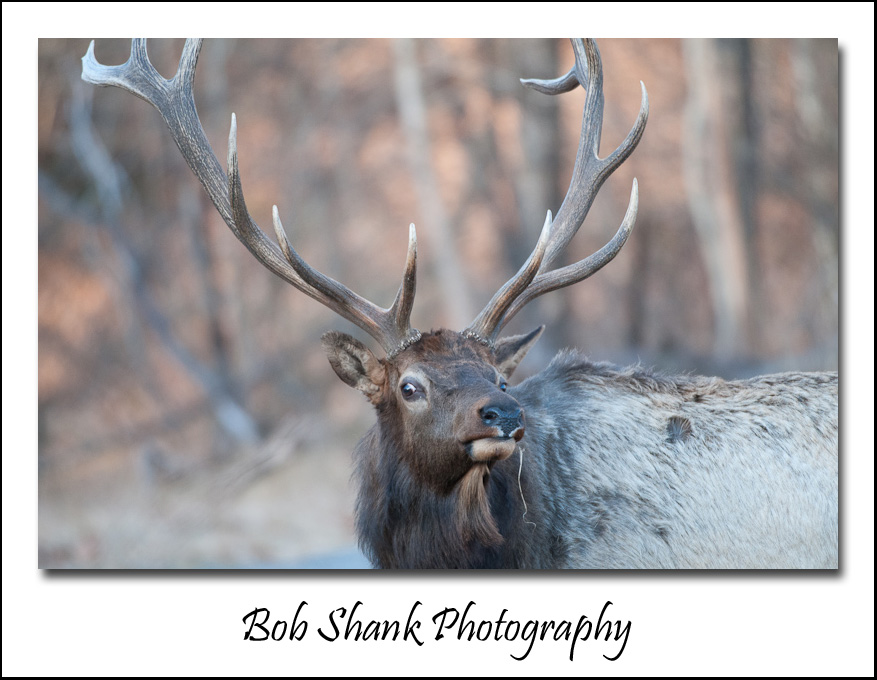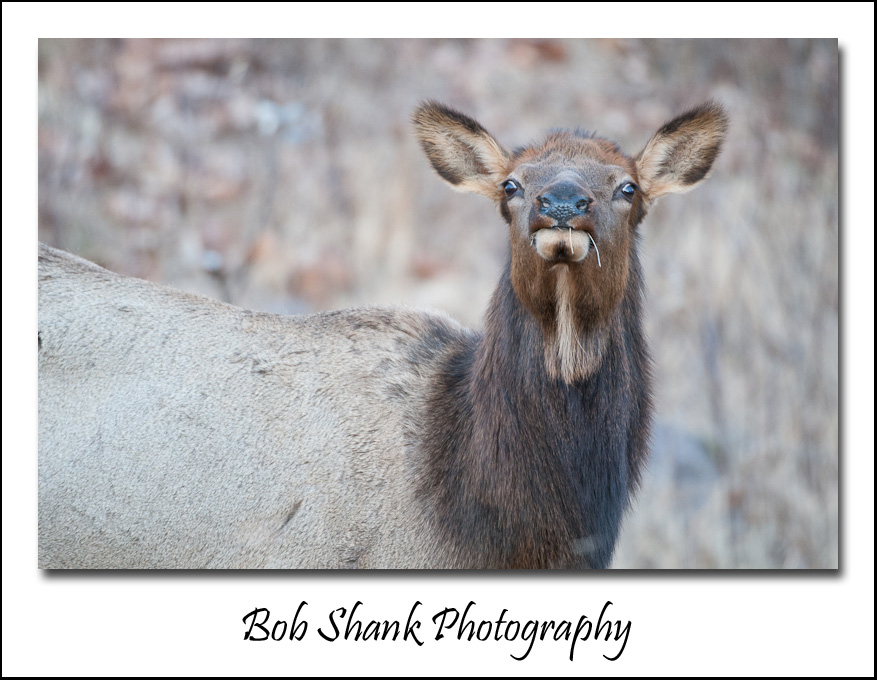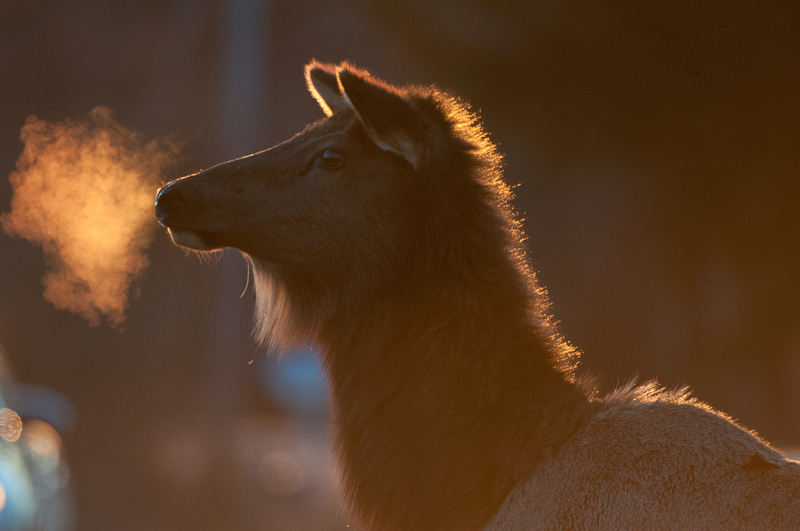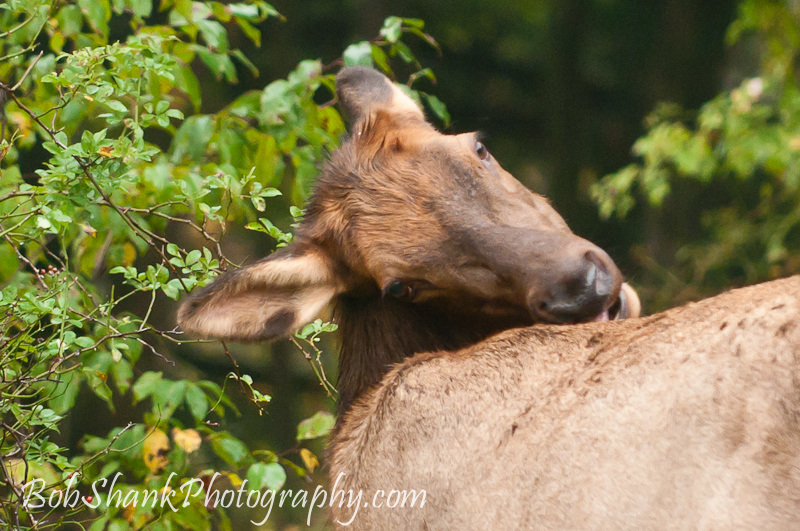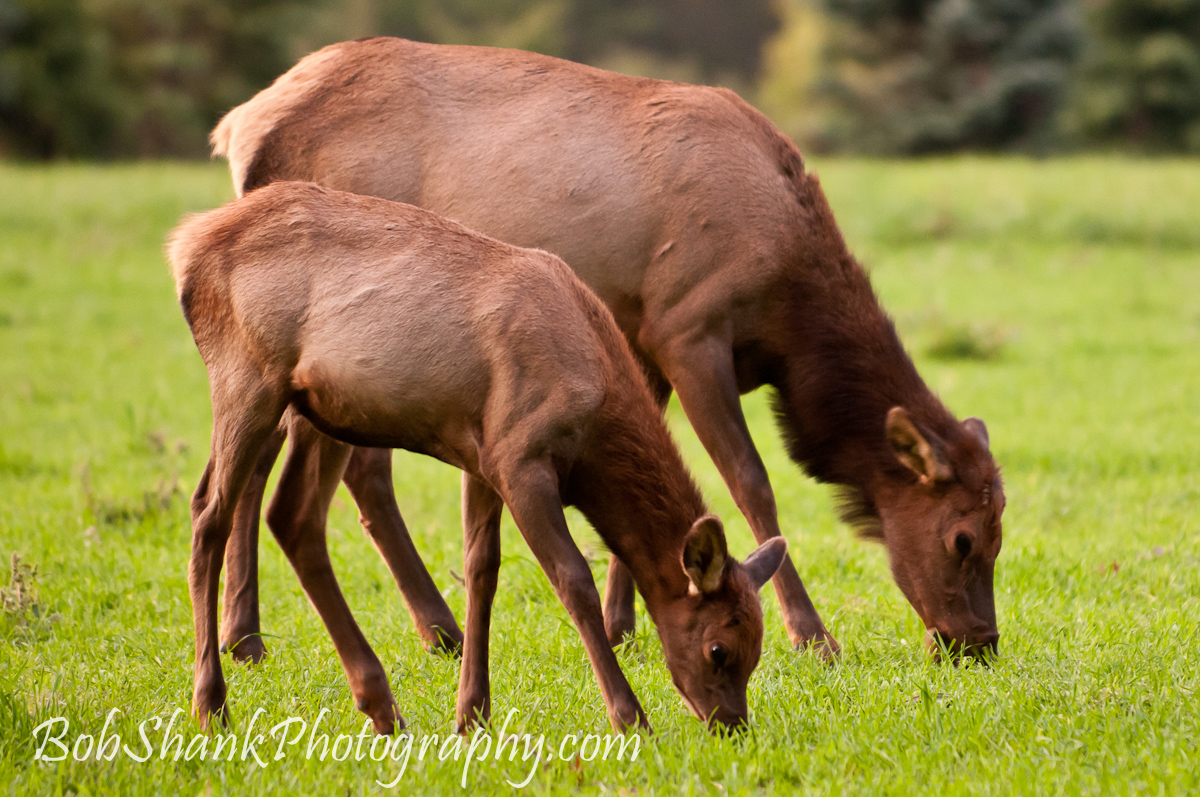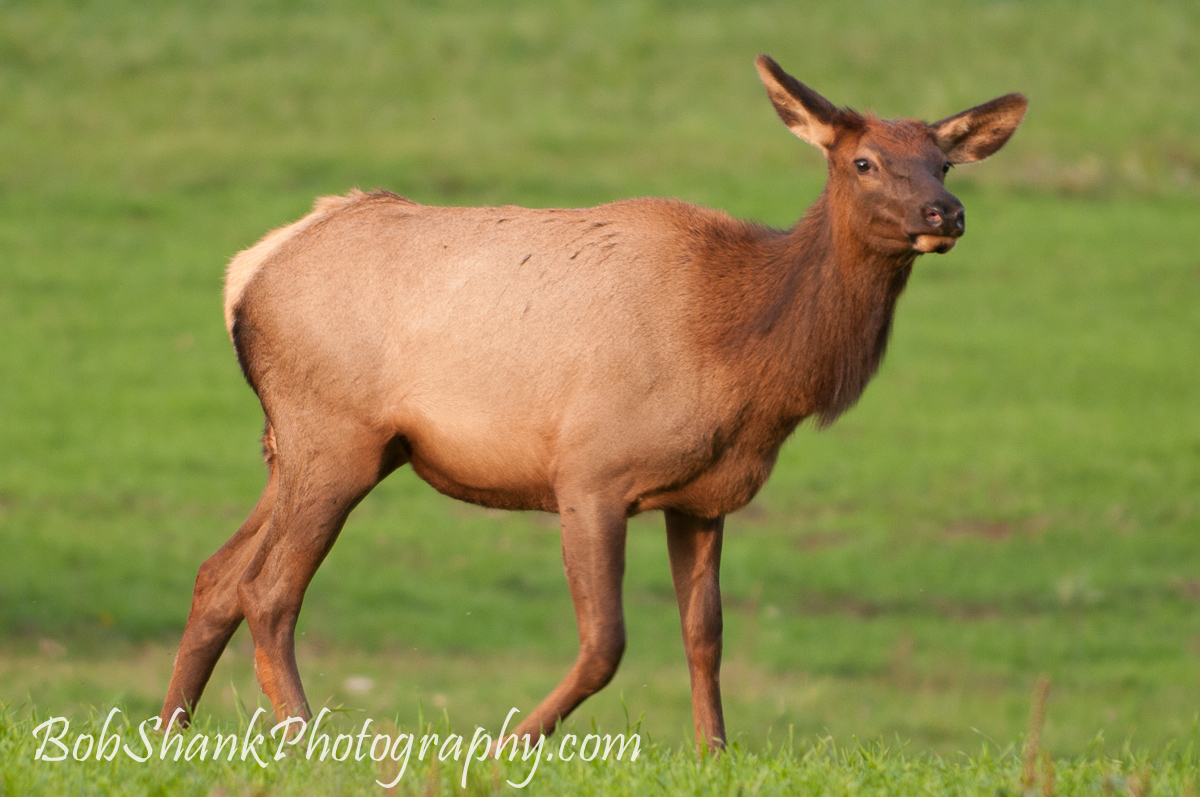Animal behavior shows a lot about their comfort level. If they are feeding, for example, this shows they are relaxed and not too worried about any impending danger. But most animals reveal specific behavioral signs that indicate when they are not happy. This bull is showing the whites of his eyes–a sign that he is not overly satisfied with me at the moment. I might be in his way to greener pastures, I might be too close to him, or I might be viewed as just in his way for whatever reason. The whites in his eyes show that is not relaxed.
Similarly, this cow is busy eating some grass, but her eyes show that is worried about something. At the very least, she is keeping a keen eye out for any sign of trouble.
We can photograph our subjects better when we learn more about them. It doesn’t matter what subject we are photographing either. When we learn more about our subject we will be able to get better photographs. So the next time you are out with your camera pay close attention to your subject. What do you see? Are there any signs that is putting your subject at ease? Or are there signs that indicate something is wrong.
Be patient, work slow, and pay attention to the animal’s behavior. It can tell us a lot!
